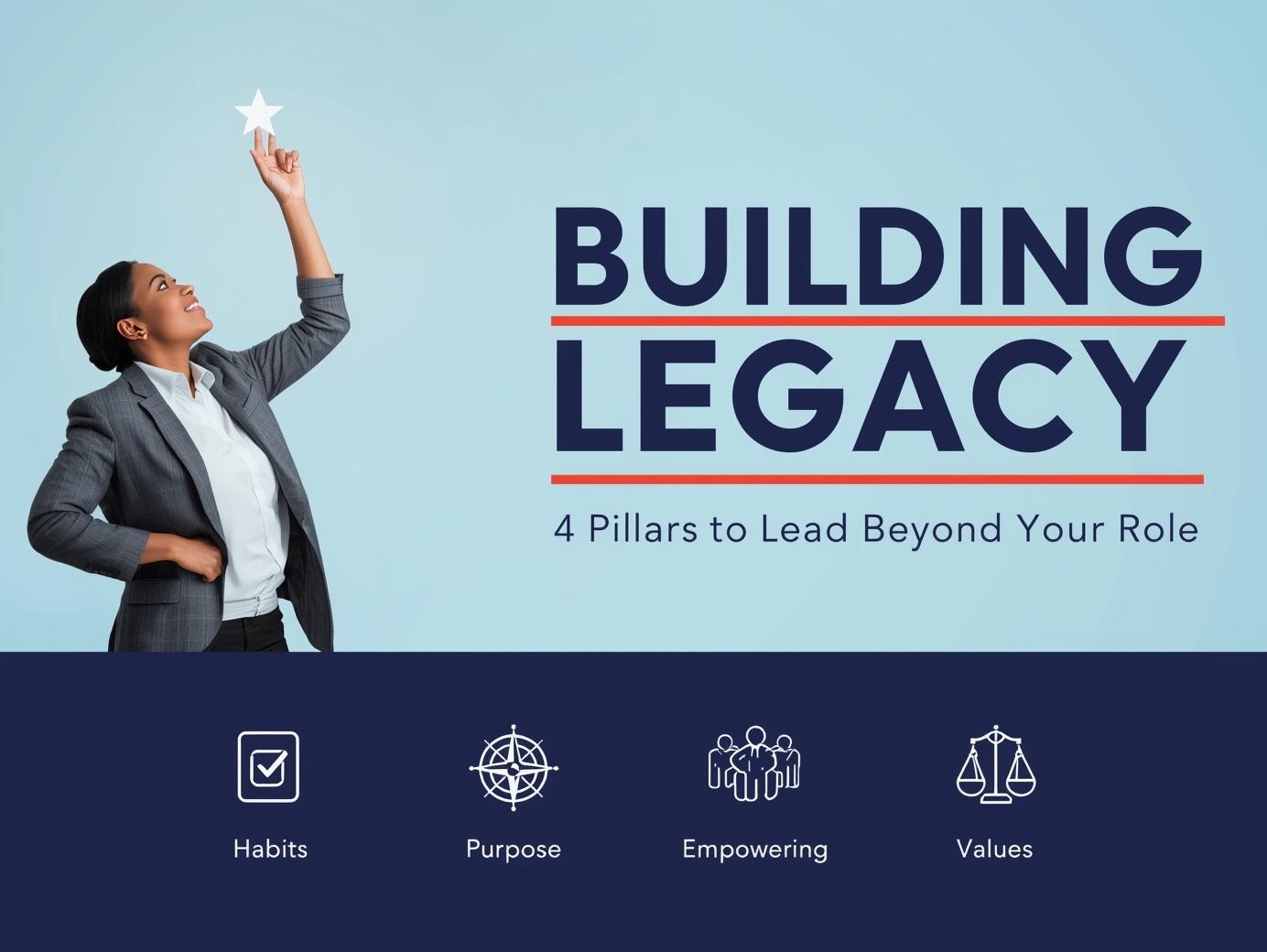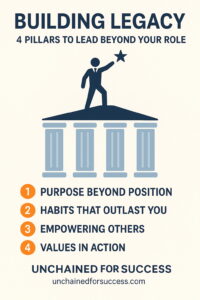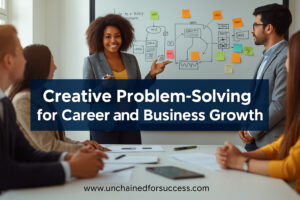Building Legacy: How to Lead Beyond Your Role

Introduction: Why Legacy Leadership Matters
Building legacy is not about titles. It is about the impact you leave behind. Roles change, positions shift, but the legacy of how you influenced people and shaped culture continues long after.
In my own journey, I’ve seen that building a legacy isn’t about one big achievement. It is about consistent alignment of purpose, vision, and habits—what I call the Unchained Goals Framework. This framework shows that belief systems and daily actions form the foundation of meaningful achievement.
As I explained in Starting 2025 with Clarity: Define Your Vision and Purpose, clarity gives direction. Without it, legacy is left to chance. With it, you create influence that is intentional and lasting.
What Does “Leading Beyond Your Role” Mean?
Leading beyond your role means refusing to be limited by your job description. It is asking: “How will people be better because I was here?”
Harvard Business Review notes that leaders who think beyond themselves inspire loyalty and performance. Oxford University research also shows that leadership impact is most enduring when it builds social capital—the networks of trust and influence that remain after formal authority ends.
I’ve seen this in programmes I supported. Projects often turned around not because of new systems, but because leaders stepped up to inspire beyond their assigned duties. That shift sparked momentum—and that momentum created legacy.
The Four Pillars of Legacy Leadership
- Purpose Beyond Position
Your purpose is the anchor of your legacy. Nelson Mandela’s vision for a free South Africa outlived his presidency. It was his purpose—not his title—that made his leadership timeless.
In Breaking Free: Identifying Limiting Beliefs, I showed how limiting beliefs hold us back from embracing purpose. Replacing them with liberating beliefs sets the stage for a legacy that transcends any role.
- Habits that Outlast You
Legacy isn’t built in one defining moment. It is shaped through daily actions. Habits create invisible trails that others can follow.
In Small Steps, Big Impact: Building Consistent Habits, I explained how small, consistent habits lead to extraordinary results. When those habits align with your values, they become part of the culture you leave behind.
I live this myself through my weekly blogs. The consistency isn’t always easy, but over time, it has created a library of resources that will outlast me. That, too, is legacy.
- Empowering Others
The greatest legacy leaders multiply themselves. They invest in others so that the impact grows far beyond what they alone could achieve.
Psychology Today reports that empowering leadership strengthens team resilience and motivation. I’ve seen it in my own work: one participant from my goals course went on to start a successful business after reframing their belief system. That ripple effect is legacy in action.
- Values in Action
Values are the backbone of legacy. People remember what you lived, not what you said.
Cambridge Judge Business School highlights that values-driven organisations outperform those chasing only profit. When your actions reflect your values consistently, people trust you. That trust lives on as your legacy.

Practical Strategies to Lead Beyond Your Role
- Model Accountability – Don’t wait to be asked; set the example. As I explained in Why Accountability Drives Success, accountability cements belief and drives results.
- Build Supportive Networks – Surround yourself with people who stretch your vision. I discussed this in Success in Teams: Building Supportive Networks, where I showed how strong networks amplify individual influence.
- Create Micro-Legacies Daily – Mentor someone, show kindness, innovate. Small actions leave lasting impressions.
- Document Your Vision – Write it, speak it, and live it. That is why I wrote Unchained: Success Unlocked—to ensure my framework outlives me and continues to guide others.
Real-World Examples of Legacy Leadership
- Oprah Winfrey built a legacy of empowerment through storytelling, shaping lives across the globe.
- Steve Jobs envisioned a world where technology was simple and human-centred. That vision continues to shape Apple and the wider industry.
- Personal Example: My weekly commitment to blogs and quotes is not about likes or shares. It is about leaving behind practical tools that inspire people to pursue meaningful goals. That consistency, I believe, is part of the legacy I am building.
Obstacles to Building Legacy—and How to Overcome Them
- Short-term focus → Commit to long-term vision planning.
- Fear of irrelevance → Choose to mentor and empower others.
- Limiting beliefs → Shift to liberating beliefs, as explored in From Limiting to Liberating Belief System.
Harvard Business Review reminds us that purpose-driven goals outperform traditional objectives. And Cambridge Judge Business School research confirms that values and trust drive long-term influence. Legacy isn’t built overnight—it is shaped over years of consistent alignment.
Call to Action: Your Legacy Starts Today
Ask yourself: What will people say changed because I was here?
Take one action this week—mentor someone, record your vision, or commit to one new habit—that will outlive your role.
For more tools, explore my book Unchained: Success Unlocked and revisit my blogs on vision, beliefs, and habits.
References
- Kwegyir-Afful, C. (2023). Unchained: Success Unlocked – A Proven Framework for Achieving Your Goals.
- Harvard Business Review – The Power of Vision in Leadership
- Harvard Business Review – Why Purpose-Driven Goals Outperform Traditional Objectives
- Oxford Saïd Business School – Leadership and Social Capital
- Cambridge Judge Business School – Leadership and Values Research
- Psychology Today – Leadership and Empowerment




